Buying a stylish fur coat that looks like an animal skin, but at the same time is artificial, is available to any woman. Natural fur is beauty and chic. A fur coat made of it is for those who can afford to combine comfort and luxury: materials approaching the quality of such furs as mink and sable have not yet been invented by the fashion industry.
It is possible to sew wonderful fur clothes in a studio, you can try to create yourself, patterns for fur coats can be found on the Internet. In the fascinating world of handicrafts, positive emotions are guaranteed in the process of making a fur product, the result is the fulfillment of a dream.
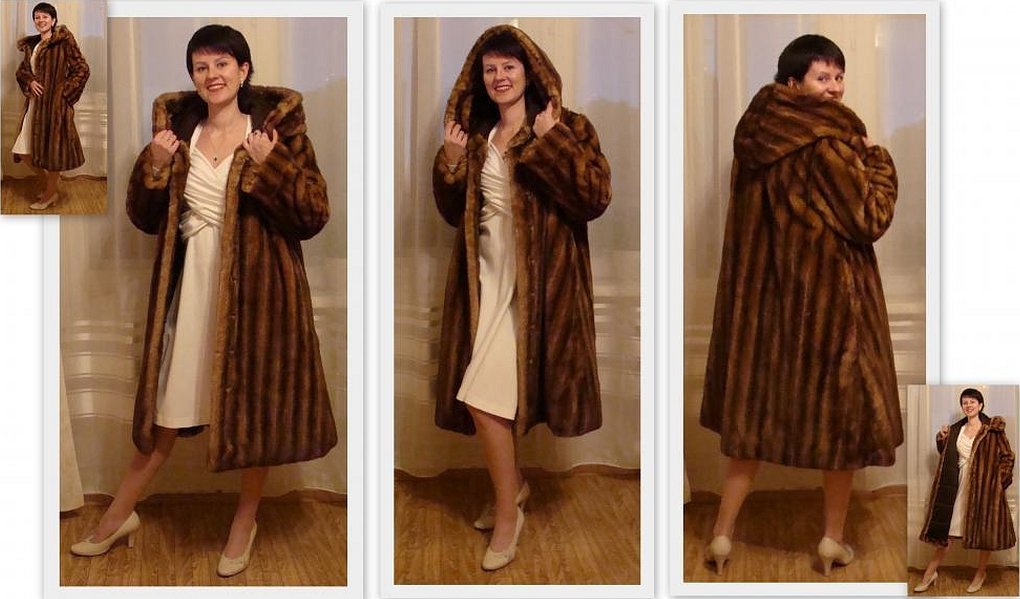
- On the intricacies of working with different types of fur
- About types of artificial fur
- About tools for working with fur
- About calculations of the required footage for a fur coat
- About the technology of sewing a fur coat or short fur coat using a pattern
- About sewing a children's fur coat
- About the pattern of a fur coat with a hood made of natural fur
On the intricacies of working with different types of fur
The correct selection of fur and sewing of fur coats require practical skills, how to sew an artificial fur coat quickly and exclusively? The ability to work with different types of fur, taking into account their features and differences, with a manual furrier's seam, a furrier's machine, special knives for cutting skins, the basics of cutting fur fabrics - this is not the full amount of knowledge that you need to have when starting work. Preparation for sewing products from natural and artificial fur and, directly, the process itself differ significantly.
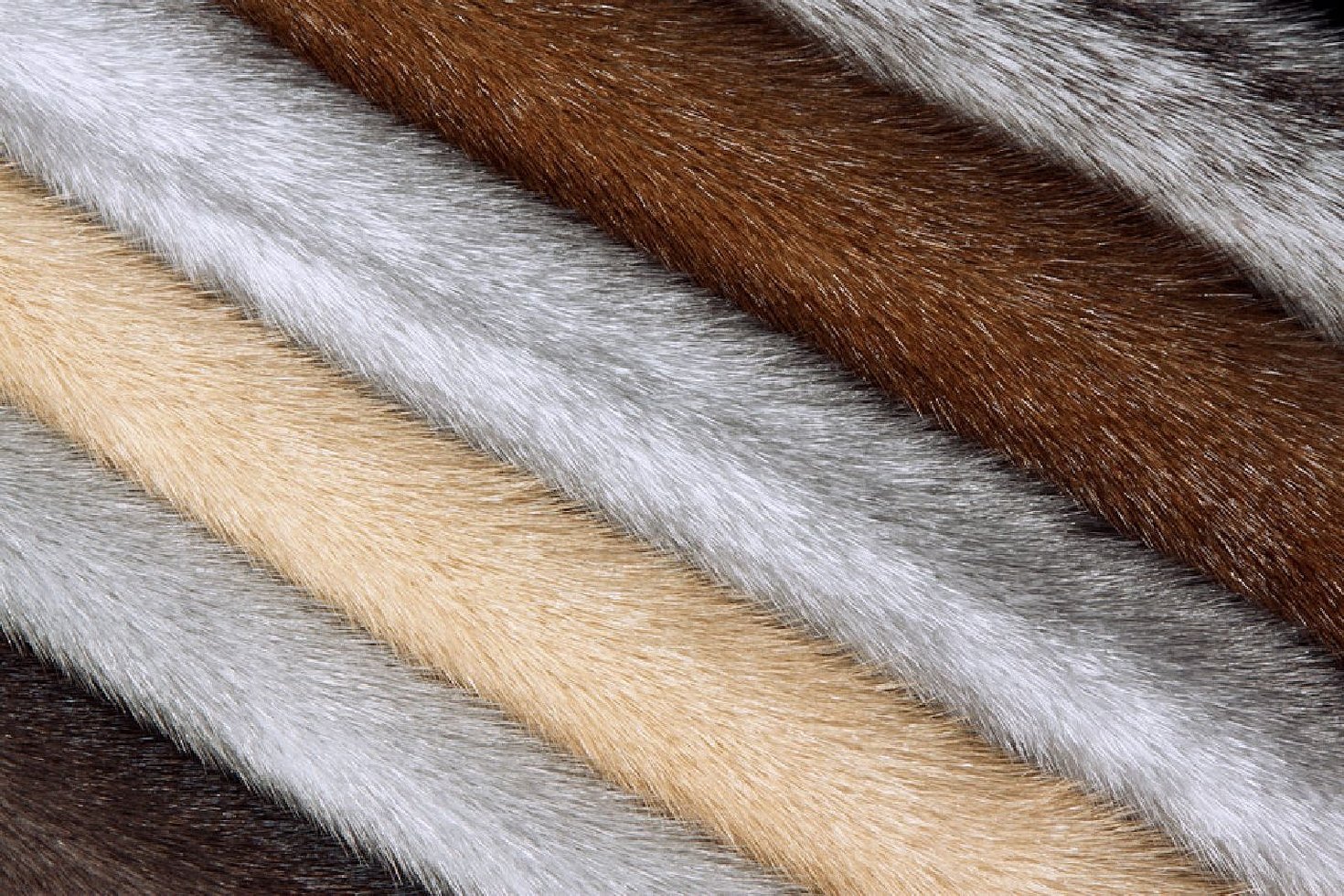
For the purchase of natural fur, you should contact specialized stores or hunters (if you need individual skins). Before starting work, especially if the fur is presented in the form of small skins, it is necessary to connect them in such a way that a single canvas is presented.

The step-by-step process is as follows:
- Connecting skins.
- Turning and straightening (use a hammer to tap on the seams from the inside).
- Determination of the pile on the skins taking into account the length, and their combination.
- When hand stitching, there is a "little slack" but the tension is distributed equally.
- In order to avoid deformation of the fabric, some parts and sections of the fur coat are duplicated using lining material.
- Cotton tapes are used to strengthen seams (shoulder, connecting armhole and neck elements).
- To align the seams, in order to increase the size of the canvas, stretching is done on a flat surface; nails are used for this purpose.
- Using a metal comb, the areas where the skins are connected are processed.
- The skins must match, taking into account the length of the pile, its consistency and shade.
Please note! To avoid damage, fur is cut using a blade or a special shoe knife, not scissors.
Any store that sells fabrics will offer a choice of faux furs. They are easier to work with, cheaper, and sold in one piece.
For sewing items from artificial fur, a household sewing machine is used. Items from natural fur must be sewn by hand, or a special vertical furrier machine is used.
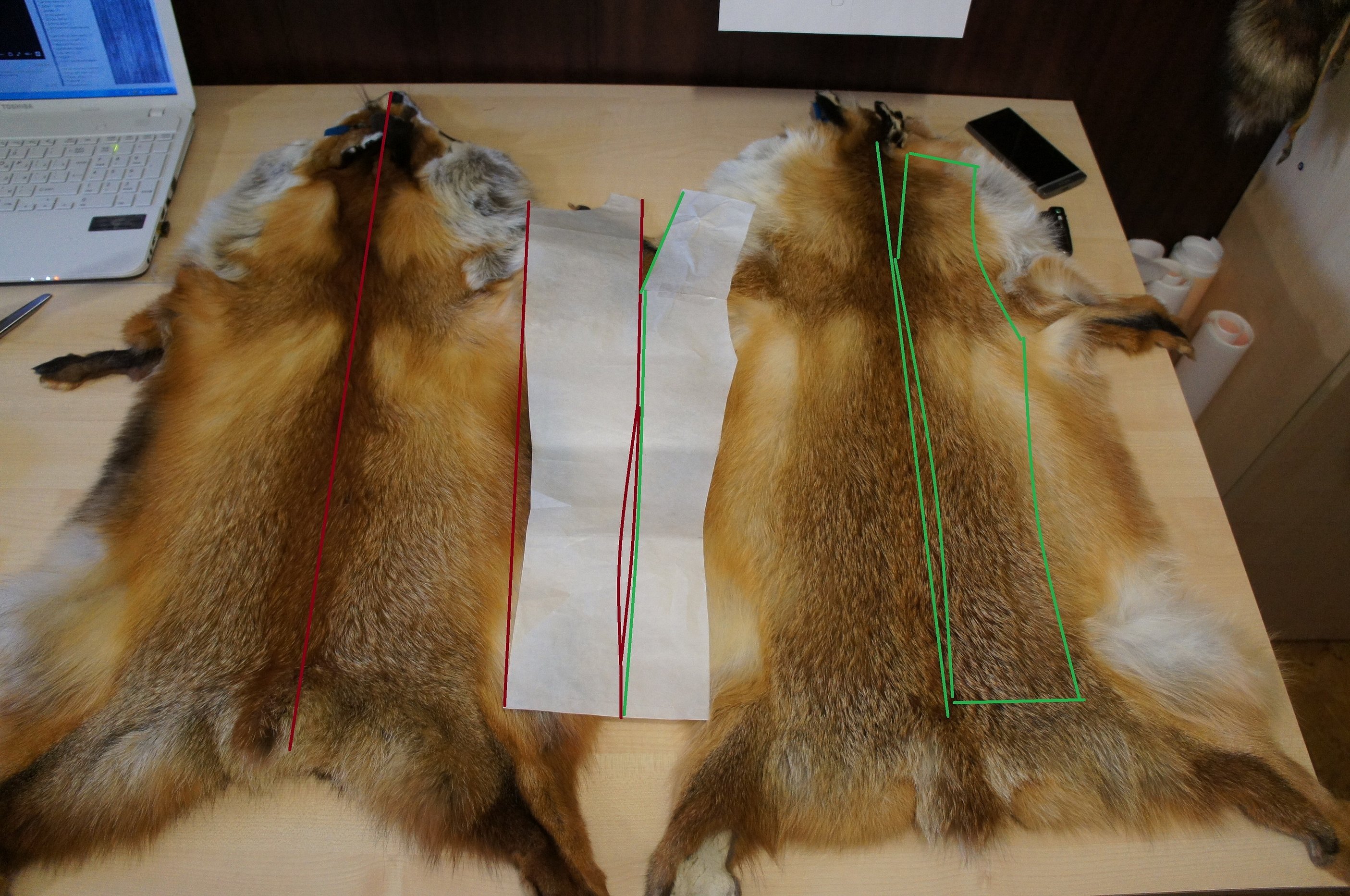
Sewing a fur coat from artificial fur with your own hands is a different process, the work in preparing the pattern of fur coats is also different. For sewing "artificial", before cutting, you should take into account the length of the pile. Fabric with a short pile - the direction of cutting does not matter, with a long pile, the cutting is done taking into account its direction. When stitching parts in this case, straight lines are used, and to pull the pile out of the seams, you need to use a needle or apply a steamer.
Excess fur on fabric allowances is cut off. Hemmed areas are heat treated to reduce volume. When processing caps and shoulder seams, it is necessary to reinforce them with strips; cotton fabric can be used for these purposes.
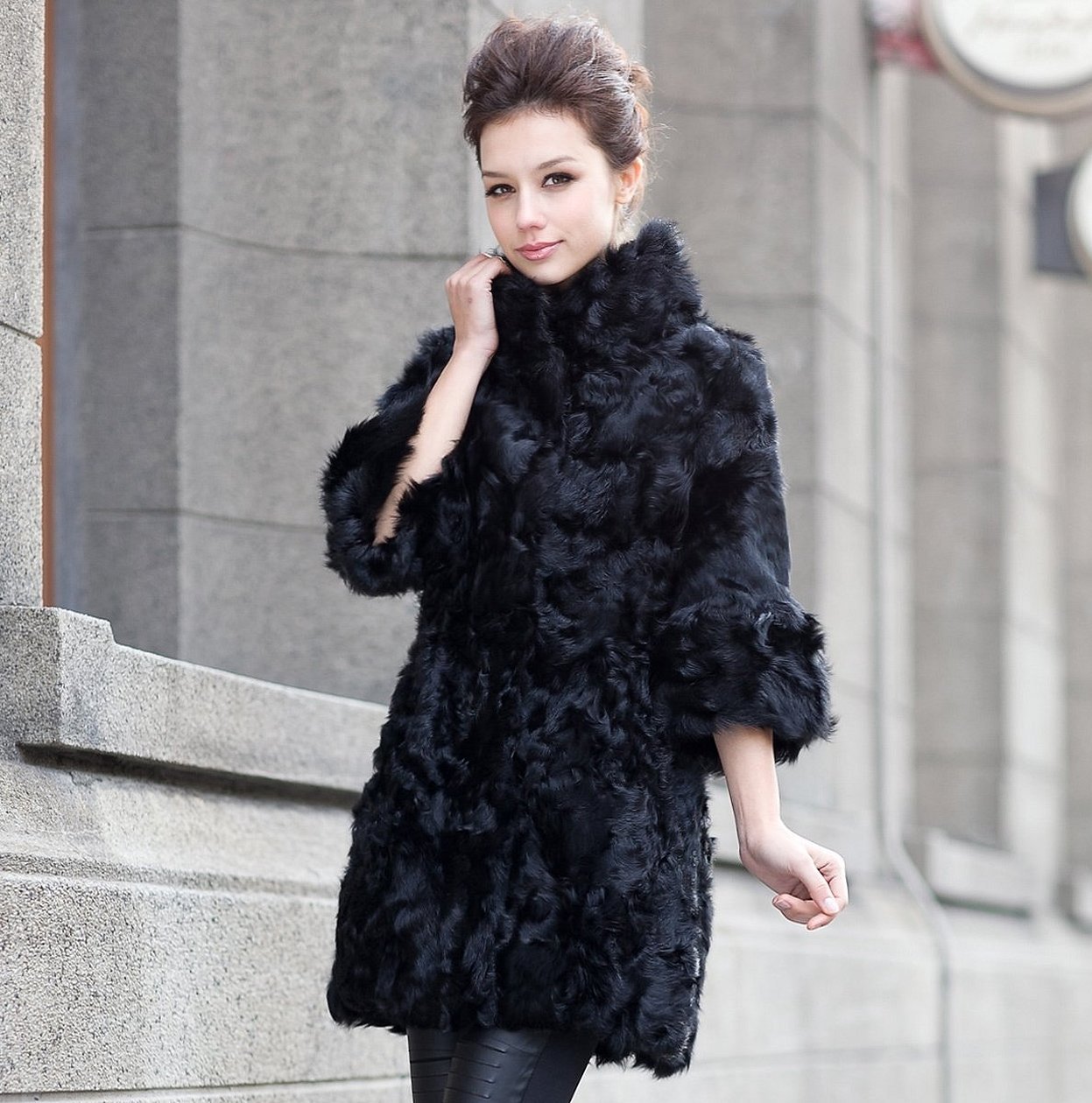
Important! If there is a pattern on the faux fur fabric, it is adjusted before cutting.
Working with fur can be complicated by dust that occurs when processing fleecy fabric.
About types of artificial fur
Faux furs, which are reproduced by modern technologies, have characteristics that confirm their high quality, and are outwardly little different from natural ones. They have been a trend for the last few years. The products are included in the collections of many famous designers. The choice is wide and varied. And if you think about one thing: "Faux fur coat, how to sew, what to choose?" The question is solvable. To make a choice in favor of a specific fur, an individual approach is needed.
Artificial fur material consists of two layers: a smooth woven or knitted base and a pile outer side. The woven base of artificial fur includes materials in the form of:
- synthetic;
- viscose;
- cotton;
- woolen;
- silk.

Textile fibers (synthetic, mixed or natural, for example - sheep wool) are the basis of the villi of artificial fur. The positive qualities of these fabrics include:
- durability;
- wear resistance;
- thermal conductivity;
- beautiful appearance.
One of the main advantages of artificial fur is that you can sew things from this material yourself, and in the future, carry out simple care, sew a fur coat from artificial fur with your own hands patterns is possible.
About tools for working with fur
To work with fur, you need a small number of tools. For example, to repair a leather coat, you only need a needle and the ability to make reliable seams. To sew a karakul fur coat, you need not only knowledge of how to perform this type of work, but also how to use a set that includes furrier tools. Unlike sewing products from artificial fur, working with natural fur is mastery of the operations performed by a furrier machine, plus numerous special tools and devices.

What equipment will you need to create a fur coat yourself? This set is presented:
- with sharp tailor's scissors or a furrier's knife (the second option is preferred);
- clothespins (when working with natural fur);
- a hammer with a soft silicone head (can be wrapped with fabric);
- with chalk, soap or a gel ballpoint pen (bright color);
- with a long metal ruler;
- safety pins;
- small nails (stretching natural fur);
- with a measuring tape;
- punch and attachments (with its help, fittings are installed);
- furrier's needles (with three edges or gypsy needles);
- comb;
- thimble;
- decorative and functional fittings (fur coat hooks, hanging loops, buttons).
About calculations of the required footage for a fur coat
First of all, you need to choose the style. Having decided on the model (straight, trapezoid or cocoon), you can start calculating the footage.
The main parameters of the product are presented:
- length (distance “upper shoulder point – preferred length”);
- sleeve length (the value “top of the shoulder – desired length”).
Depending on the planned: a straight fur coat, or a flared silhouette (size 42-48) - it is enough in a fabric 150 centimeters wide, of one length. A larger size - with this width, more fabric will be needed (up to two lengths). If the manufactured product is planned to be decorated with structural elements - the material will be needed with a reserve (0.5-0.8 m). It is necessary to take into account the additional cost of allowances when processing seams, and shrinkage (0.1-0.2 m). Elements in the form of facings (not common), lapels, patch pockets - the remains of the fur fabric are used for them.
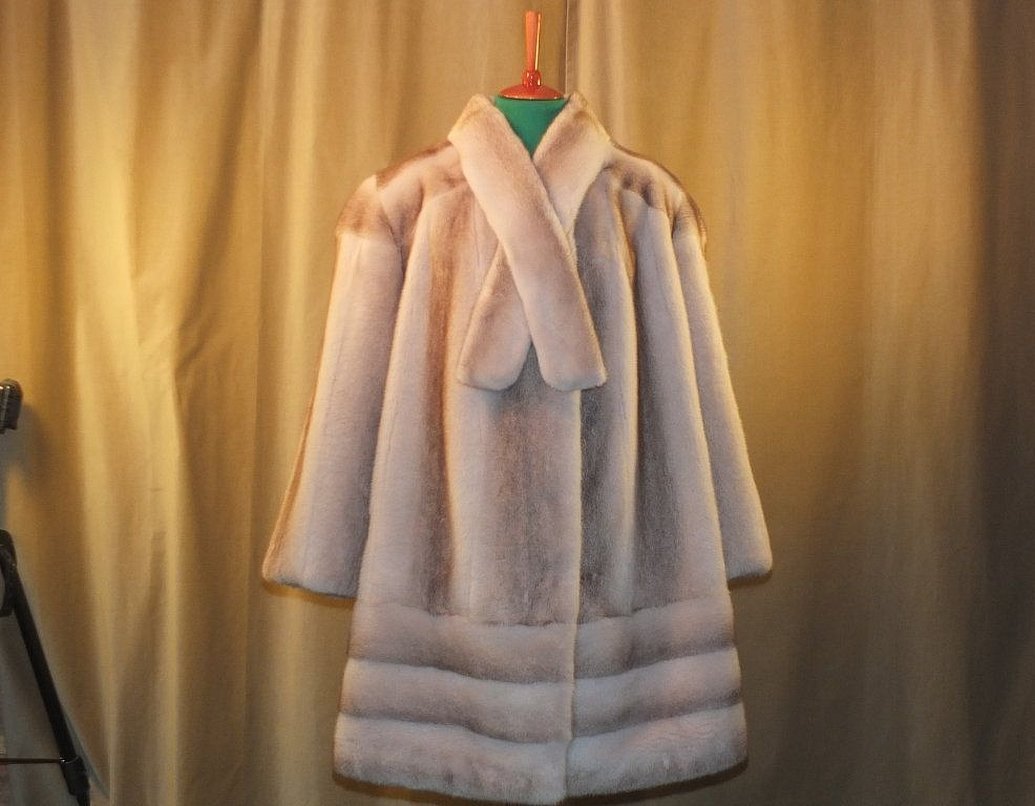
In cases where the product contains different types of fur, the footage of the fabric is calculated taking into account the height of each part, and separately.
When determining the lining fabric, the calculation is made taking into account the style of the product, as with the footage of the main fur fabric, the length of the product itself and the sleeves are taken as a basis.
Additional information. Inexpensive fabrics such as satin and satin are used as lining material. They are wear-resistant, easy to use and look presentable. — have a smooth, shiny surface.
About the technology of sewing a fur coat or short fur coat using a pattern
Sewing fur products begins with preparing a pattern. For sewing, you can use a ready-made pattern of a fur coat or short fur coat, or you can borrow a drawing from the Internet. But it is not difficult to make a pattern yourself.
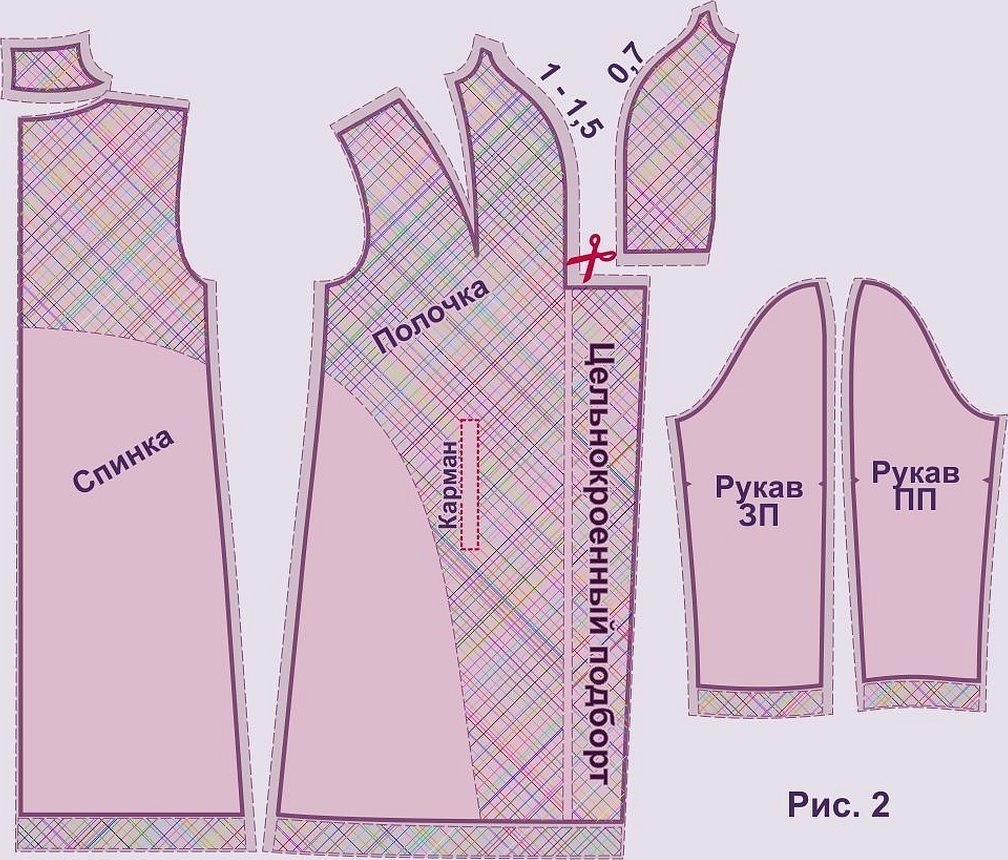
Basic rules:
- Each cut piece must match the direction of the pile.
- Each piece must have mirror image parts;
- Symmetry of the design in details is required;
- Only the base of the fur is cut (the pile is not cut).
The cutting of a fur coat begins with modeling the back (1 piece) and the front (2 pieces). The sleeve pattern is constructed (they can be single-seam, straight or flared). And then the collar or hood is cut out. The collar pattern, for example, for a mink coat is not difficult to construct. The hood will require diligence.
About sewing a children's fur coat
The material from which fur coats for children are sewn is inexpensive fur, in the form of rabbit, squirrel or tsigeyka. Sewing a small fur coat does not belong to painstaking and labor-intensive processes. Of course, there are some peculiarities. For example, the width of the sleeves, — They should be tailored to the child's mobility. But the width is normal, not "flying", so that the baby does not freeze. The length is also averaged.
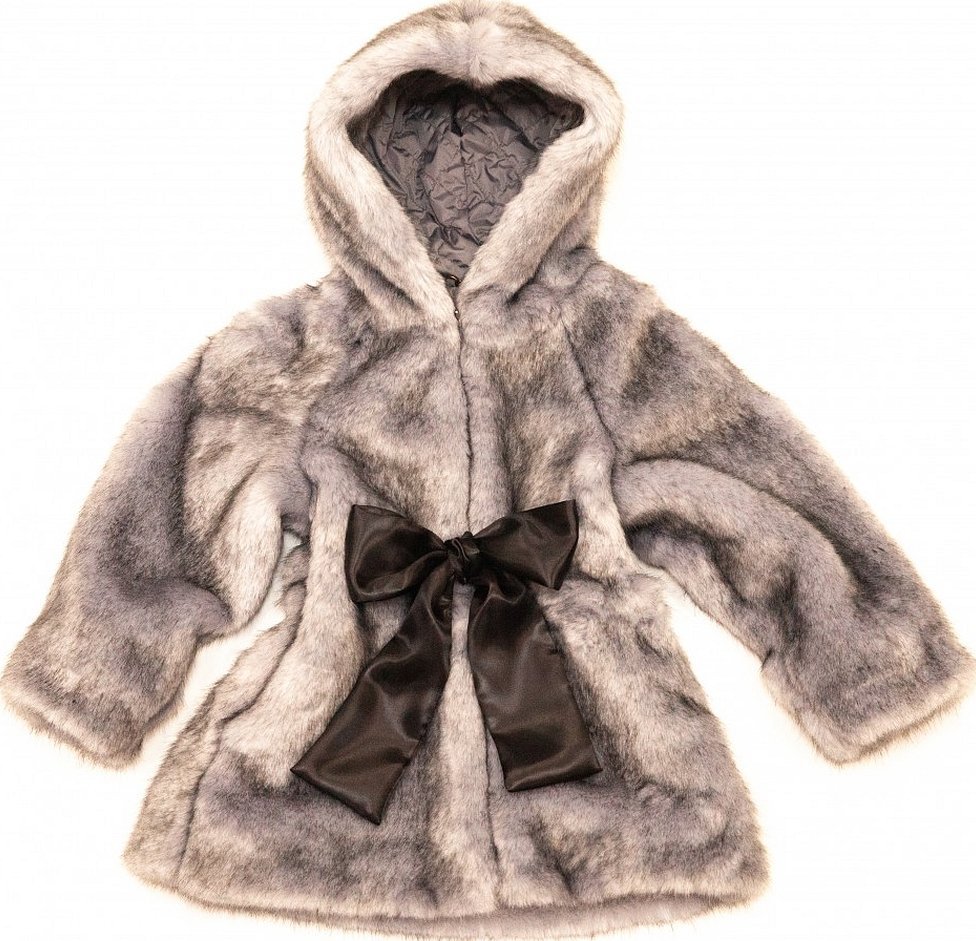
The pattern is initially made of thick fabric and pre-basted. The "preliminary model" is tried on the child. And only taking into account the shortcomings and their corrections, can the pattern be transferred to fur fabric. It should be noted that higher quality fur is used to sew the sleeve and collar. The seam allowance is allowed to be at least 0.4 mm. Up to 2-3 cm should be left for hemming. Next, the process of sewing the product, which includes:
- sewing on fasteners;
- stitching of side seams;
- lining hemming;
- stitching shoulder seams;
- sewing on the finished collar;
- sewing in sleeves (together with lining).
A wonderful fur coat for the baby is ready. We can say with confidence that the baby will be warm in winter.
About the pattern of a fur coat with a hood made of natural fur
When wearing a fur coat, there is not always a desire to wear a hat. Given the harsh winter, a hood in a fur coat is irreplaceable.
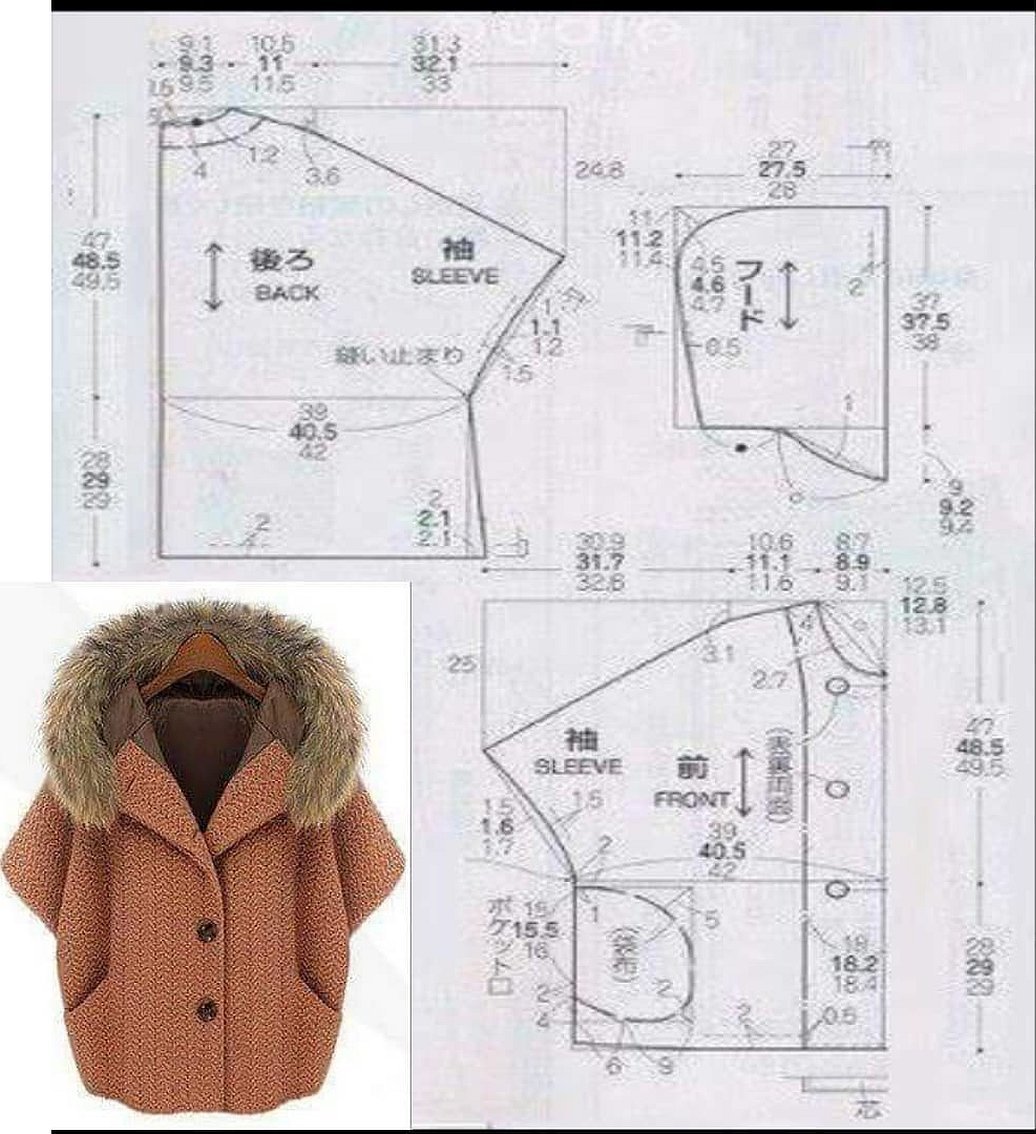
When sewing a model with a hood, you should remember about two options. In the first, the hood is sewn to the neckline, in the second, it is connected to the front shelf. To construct a pattern, you need to know the size of the head circumference and the distance "between the base of the neck - through the crown - to the base of the neck in front." A rectangle is drawn with sides equal to half of the obtained measurements. If the hood is connected to the neck, in the rectangle you should round off the upper right corner, cut off the part on the right side by about 5 centimeters, and increase it by 3-4 centimeters in the back of the head. The second option involves the following steps:
- the level of sewing the hood to the shelf is determined;
- A template is made which is attached to the hood pattern in such a way that the cut level can be continued near the face.
The following steps are identical to those for attaching to the neck.
If you have skills in handicrafts and love this activity, you can experiment and try your hand at sewing a fur coat. Not everyone dares to take this step, knowing that a special sewing machine and tools must be used in the process. Of course, it is easier to contact a studio where highly qualified specialists work.
But experience does not come immediately - everything is done for the first time sometime. Therefore, pay close attention to studying the rules of working with fur, master the cutting technique, adhere to the recommended methods of sewing artificial and natural fur, and as a result, an exclusive item, sewn independently, will bring comfort, joy and pleasure.




